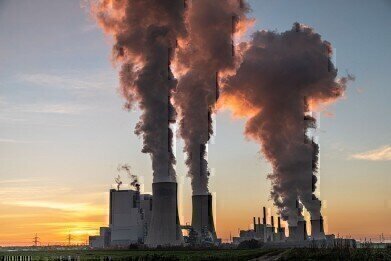Green Energy
What Is Decarbonised Energy?
May 07 2022
In a world where climate change, global warming and extreme weather events claim an increasing amount of column inches and airtime minutes in our mainstream media, it’s clear that we must reduce the emissions attached to the most polluting industries. The energy sector is responsible for the lion’s share (73.2%) of greenhouse gas emissions, meaning it’s public energy number one when it comes to cleaning up our environmental act.
Decarbonising the energy sector is, therefore, a huge priority for governments around the globe, including in the UK. But what exactly does that mean? Well, given that carbon dioxide is the gas which has the biggest impact on global warming, it has become a byword for greenhouse gases at large. Therefore, decarbonised energy is that which is generated via sources which do not produce harmful emissions, or else have them extracted from the process at the point of emission.
The renewable revolution
Fossil fuels such as oil, gas and coal have formed the backbone of the energy industry across the globe over the last few centuries. However, transitioning away from these damaging sources of power to cleaner and greener means of energy production, such as renewable energy, is imperative if the energy sector is to become decarbonised.
Significant advances in technology over the last decade or two have meant that solar power and wind power are now both competitive with traditional energy sources in terms of pricing. Elsewhere, hydroelectric power, wave power and geothermal power are other means of generating energy from the Earth’s natural resources. What’s more, new technology has enabled biogas plant optimisation, ensuring that as much energy is produced as possible with as few emissions as possible.
Nonetheless, the intermittent nature of renewable energy means that it cannot solve all of our problems in the present climate. The wind doesn’t always blow, the sun doesn’t always shine and rain doesn’t always fall, so there are periods when renewables are not enough to meet demand. There is hope that advancements in battery technology will address this issue in the future, but a bridge power source will almost certainly be required in the near future.
Emissions reduction
As well as transitioning to forms of power generation which do not entail any emissions at all, the scientific community has also been investigating ways of decarbonising the sources of power already in use. More damaging energy sources such as coal are in the process of being phased out entirely, but others – such as natural gas – can be tweaked to reduce their harmful effect on the environment.
The primary means of achieving this goal to date has been via the use of carbon capture and storage (CCS) technology. This involves extracting the harmful greenhouse gases from the flue stream at the point of emission, then either sequestering the carbon underground or else putting it to some other beneficial use. For the process to function correctly, gas purity analysis is absolutely vital so as to ensure that the extracted gas can be disposed of or applied accordingly.
Although the technology is highly promising, it has proven very expensive and very complicated to deploy at scale. This means it is only in evidence at large power stations and other industrial facilities and as such, is unlikely to provide the ultimate solution to the issue of decarbonising the energy sector. However, it can certainly help in the energy transition phase as fossil fuels are phased out in favour of renewables.
Events
IWA World Water Congress & Exhibition
Aug 11 2024 Toronto, Canada
Aug 25 2024 Stockholm, Sweden and online
Sep 03 2024 Mexico City, Mexico
Sep 03 2024 Mexico City, Mexico
Sep 03 2024 San Diego, CA, USA














